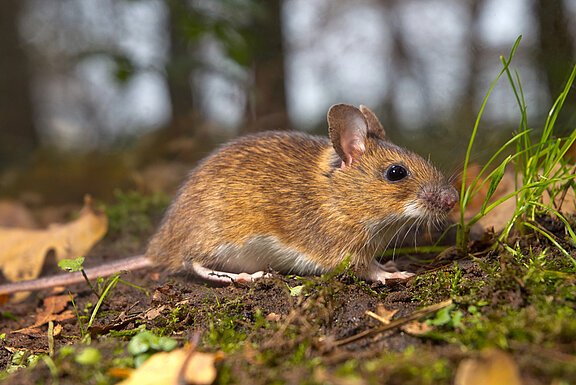Isle of Riems, 7 October 2020. Up to now, humans were considered the only natural host of rubella virus, the causative agent of rubella („German measles“). However, the origin of rubella virus was still unknown. In two independent studies from the USA and Germany, viruses closely related to rubella virus were now first detected in animals. While a research team from the USA found the so-called “Ruhugu virus” in cyclops roundleaf bats in Uganda, the Friedrich-Loeffler-Institut (FLI) detected the also novel “Rustrela virus” in zoo animals and yellow-necked mice. Both viruses show strong structural similarities to rubella virus and indicate that it originates from animals. The results of the study have now been jointly published in the renowned scientific journal “NATURE”.
The investigations at FLI were carried out to clarify the cause of death of three zoo animals. A donkey, a Bennett's wallaby and a capybara died with unexplained cause. In all three animals, the novel virus could be identified by means of metagenome analysis, i.e. deep sequencing of genetic material and comparison with genetic material of various other viruses. In addition, yellow-necked mice, known as carriers of a certain hantavirus in Southeast Europe, were analyzed, and the same virus was found in animals from both the immediate vicinity of the zoo and the surrounding region. Since the yellow-necked mice did not show any signs of disease, they are likely to be the reservoir host of the novel virus.
Based on the close relationship to rubella virus and the Strelasund region where the virus was first detected, the name Rustrela virus was chosen. The American research team of the University of Wisconsin-Madison and partners was actually searching for coronaviruses in cyclops roundleaf bats in Uganda and discovered the Ruhugu virus, named after the region in Uganda (Ruteete Subcounty), and the word in the local Tooro language that describes the flapping of bat wings in a tree hollow: obuhuguhugu.
„With this joint discovery, the human rubella virus, more than 200 years after its first description in 1814, is no longer the sole representative of an entire virus family. The comprehensive analysis of the two novel viruses, but also the search for possible further animal reservoirs and other rubella virus-like pathogens are now an important field of research to better understand the origin of human rubella viruses“, says Prof. Dr. Martin Beer, study leader at FLI.
Rubella is an infectious disease that is distributed worldwide; a large number of countries carry out prophylactic vaccination. Infections of unvaccinated pregnant women with rubella virus are problematic, as the virus can harm the embryo and lead to stillbirth. Africa and Southeast Asia are most strongly affected, as the vaccination rate there is the lowest in the world. The WHO aims at eradicating rubella virus. Knowledge about the origin of the virus can make an important contribution to achieving this goal.
Study: Relatives of Rubella virus in diverse mammals
Andrew J. Bennett, Adrian C. Paskey, Arnt Ebinger, Florian Pfaff, Grit Priemer, Dirk Höper, Angele Breithaupt, Elisa Heuser, Rainer G. Ulrich, Jens H. Kuhn, Kimberly A. Bishop-Lilly, Martin Beer, Tony L. Goldberg
DOI: 10.1038/s41586-020-2812-9


